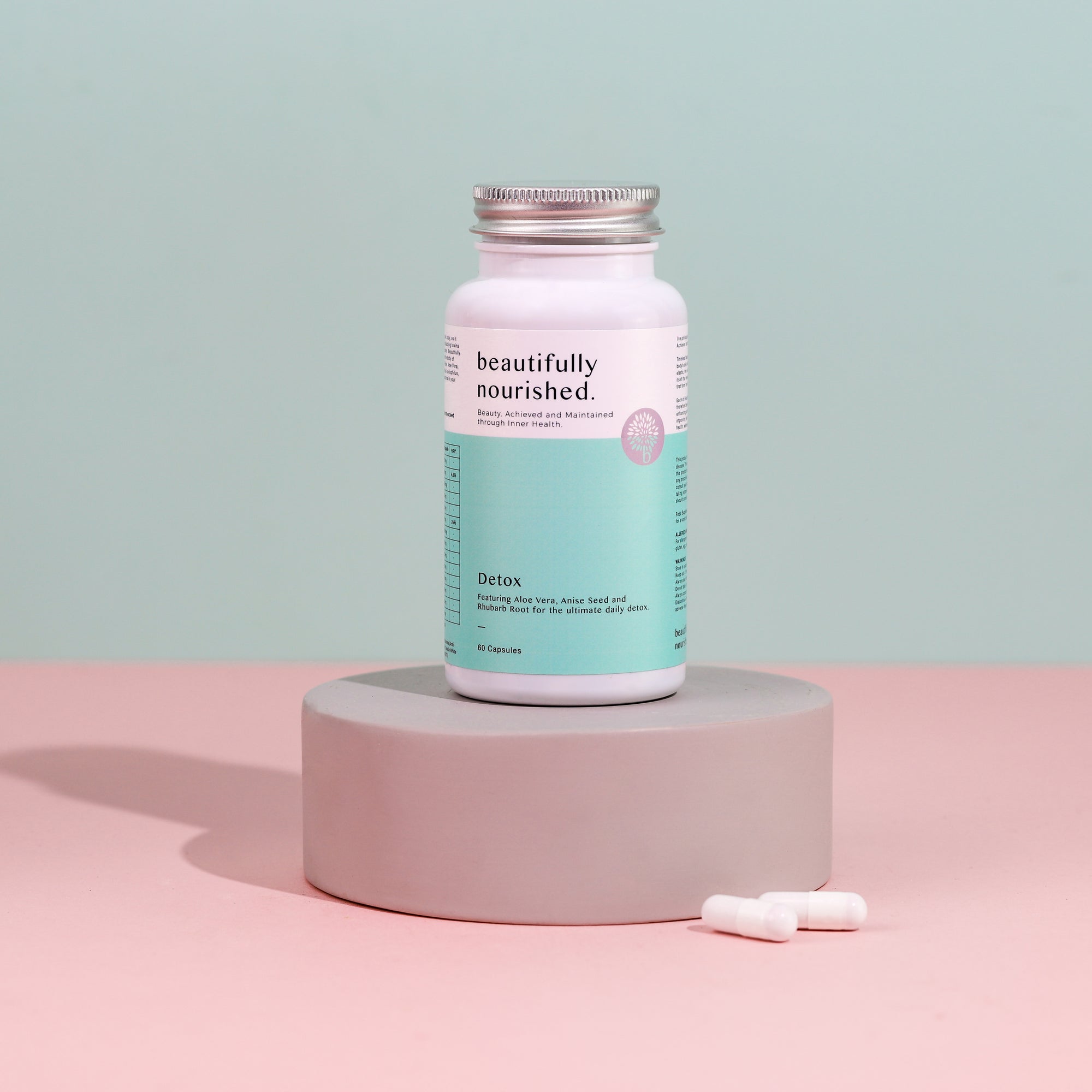What is the Gut?
Our “gut” is our gastrointestinal (GI) tract that runs from the mouth to the anus, including all the organs of the digestive system. Food taken in through the mouth is digested to extract nutrients and absorb energy, and the waste expelled as faeces.
Our gut anatomy includes our mouth, oesophagus, stomach, liver, gallbladder, pancreas (the pancreas produces gut enzymes amylase, protease, and lipase), small intestine (duodenum, jejunum and ileum) and large intestine (caecum, colon, rectum, anal canal and anus)
Our gut is a delicate ecosystem, with more flora (healthy bacteria) in it than all the other cells in the body put together. When this ecosystem is healthy, our digestive (GI) tract maintains balance of stomach acids and bacteria, allowing the body to breakdown food for nourishment and cell repair.
What is Gut Health?
Gut health meaning: Gut health refers to the physical state and physiologic function of the gastrointestinal tract.
Why is Gut Health important?
When we eat, we are not just nourishing our body, we're feeding the trillions of microbes that live inside of our gut.
Within our guts, we host over 100 trillion microbes. That is 100,000,000,000,000 !!! Approximately 1,500 x the number of human beings on the planet – all within our gut!
Our gut biome produce different proteins, synthetics, chemicals, and nutrients that can connect with other human cells. They inhabit every area of our gastrointestinal tract and significantly influence our metabolism, body weight, propensity to illness, immune systems, appetite, and mood.
Looking after our gut is so crucial for over all health, both body and mind and wellness. When our digestive health is poor, all else can suffer, from our skin, to our cognition to our energy levels.
What is Gut Microbiome?
Gut microbiota, gut flora, or microbiome are the microorganisms including bacteria, archaea and fungi that live within our digestive tracts. The gut microbiome refers to all of the microbes inside of our intestines.
Gut flora meaning: Bacteria and other organisms that live inside the intestines. They help digest food. Vitamins such as biotin and vitamin K are made by gut flora. Gut flora are also know as gut microflora, intestinal flora, intestinal microflora, and microflora.
The Gut and Immune System
Our gut acts as a first line of defence against bugs and other organisms that can make us unwell. When our gut is healthy, it keeps any foreign invaders in food from getting into the bloodstream. It also protects us from airborne viruses and bacteria.
The job of our gut lining is essentially to let out nutrients while simultaneously preventing any toxins from the bloodstream enter into the bowel. When it is healthy and working well, it forms a tight barrier that controls what gets absorbed into the bloodstream. When this protective lining becomes unhealthy and sub optimal in it's functioning, it leaks (see leaky gut) due to holes or cracks that allow microorganisms, poisons, antigens, and somewhat undigested food to enter the tissues underneath it. This may trigger inflammation and changes to gut flora that could lead to problems within the digestive tract and beyond; from the mind to the skin, to the colon and even our joints. It can trigger irritation and gut micro-biome changes, prompting issues inside our stomach.
The Gut and The Nervous System
Gut Nervous System: In addition to the nervous system in the spine, there is a nervous system in the gut called the enteric nervous system, which sends signals to the brain and vice versa. If you are anxious, depressed, or stressed, you may notice that your desire for food is different or your digestion is off. Stress hormones can shut down digestion (which can result in constipation) or speed it up (which can result in diarrhoea).
Gut neurons? Our Second Brain, the digestive system actually produces more neurotransmitters than the brain does.
The Gut and Our Brain
Gut and Brain Connection: Our brains have a direct effect on our guts and vice versa. Our gut and cerebrum are associated indeed through many nerves, particularly the Vagus nerve. The gut and its microorganisms additionally control aggravation and make various mixtures that can influence cerebrum wellbeing.
Probiotics, Prebiotics and the Gut-Brain Axis: Gut microscopic organisms influence cerebrum wellbeing, so changing our gut microbes may improve our mind wellbeing.
What Foods Help the Gut-Brain Axis?
- Omega-3 fat
- Fermented Foods
- High-fibre food sources
- Polyphenol-rich nourishments
- Tryptophan-rich food sources
Gut Health and Weight Loss
Can changes within the functionality of the gut lead to weight loss? Yes, improving digestive health can result in weight loss and weight management. Regular bowel movements, the appropriate elimination of waste and correct nutrient absorption can impact body mass and fat reserves.
What are the Signs of Good Digestion?
A healthy gastrointestinal system processes food (a healthy individual usually digests food in 24-45 hours) and eliminates waste from the body efficiently. The GI functionality can be observed in the amount of time it takes to digest food as well as the appearance of stools. Regular and frequent bowel movements indicate a healthy gastrointestinal system. The consistency, colour, and frequency of stools reflect many aspects of health, including diet, hydration, use of medications, and presence of medical conditions.
Signs of gut problems and poor digestion include leaky gut and gut inflammation. You will likely notice this in the form of pain, bloated-ness, skin irritation, brain fog, low energy and fatigue, loose stalls, constipation, irregular bowel movements and, or pain when eating.
Gut repair, is it possible? Yes. Sometime we may need a gut spring cleaning, gut cleanse. This just means making the necessary adaptation to our lifestyle to support our gut, it’s health and gut lining repair
How Can we Encourage Healthy Digestion?
UK government guidelines recommend our dietary fibre intake to be 30g a day, as part of a healthy, balanced and varied lifestyle. As most adults are only eating an average of about 18g day, we need to find ways of increasing our intake (nhs).
Beautifully Nourished’s Fibre Pro has been designed to support the gut and encourage healthy digestion. Featuring Pysllium husk powder, Inulin powder and probiotic Lactobacillus Acidophilus, which helps to support a healthy and balanced gut bacteria.
Alongside your Fibre Pro capsules, consider a low FODMAP (Fermentable Oligosaccharides, Disaccharides, Monosaccharides, and Polyols) lifestyle and consume fibre from a variety of sources.
Gut Healing Foods Include:
- Fermented foods
- Pro and Pre Biotics
- Live yoghurt
- Kefir
- Olive oil
- Ginger
- High fibre, wholegrain cereals
- Pulses such as beans, lentils and chickpeas
- Leafy Vegetables
- Berries and citrus fruits, such as oranges and grapefruit. These contain less fructose, making them easier to tolerate and less likely to cause digestive gas. Bananas are another low-fructose fruit that are fibre-rich and contain inulin, a substance that stimulates the growth of good bacteria in the gut. Inulin is one of the Fibre's found within Beautifully Nourished's Gut loving, Fibre Pro.
By Katherine Elyse Blake, Founder Beautifully Nourished, BSC Nutrition



